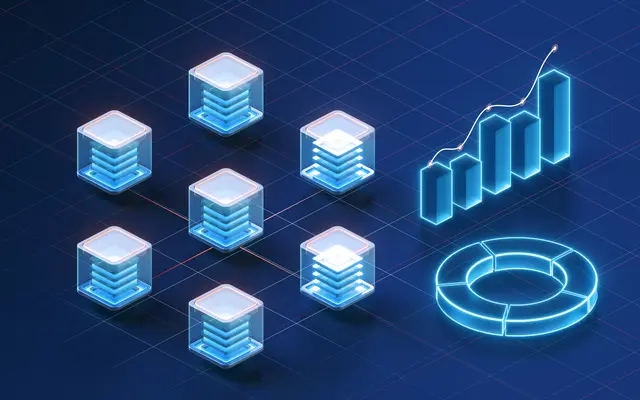Embracing Compliance and Regulatory Reporting Automation: A Path to Streamlined Supply Chain Operations
In the ever-evolving landscape of supply chain management, compliance and regulatory reporting have emerged as critical pillars for businesses to navigate. The sheer volume and complexity of regulations governing the industry can be daunting, often leading to manual processes that are prone to errors and inefficiencies.
Enter the transformative power of Compliance and Regulatory Reporting Automation, a game-changer for supply chain operations. By leveraging the capabilities of Python, AI, and cloud-based solutions, businesses can streamline this vital process, ensuring accuracy, efficiency, and peace of mind.
Keywords: Compliance and Regulatory Reporting Automation, Supply Chain, Python, AI, Cloud-based Solutions

The Power Trio: Python, AI, and Cloud for Seamless Compliance and Regulatory Reporting Automation
Python: The Master of Unattended Bots and Attended Automation
Python shines in the realm of unattended bots, tirelessly executing repetitive tasks without human intervention. These bots seamlessly monitor systems, extract data, and generate reports, ensuring continuous compliance and regulatory adherence.
Moreover, Python’s versatility extends to attended bots, empowering users with customizable, interactive automation. This level of customization enables businesses to tailor their automation solutions to specific needs, streamlining processes and enhancing productivity.
Cloud Platforms: Unlocking Automation’s True Potential
Cloud platforms transcend the limitations of traditional RPA/workflow tools, offering a robust suite of features and capabilities. Their vast compute power and scalability pave the way for complex automation scenarios, handling high volumes of data and intricate processes with ease.
Additionally, cloud platforms provide built-in security measures, ensuring the confidentiality and integrity of sensitive data. Their intuitive interfaces and pre-built connectors further simplify automation deployment and maintenance.
AI: The Catalyst for Enhanced Accuracy and Efficiency
AI techniques, such as image recognition, natural language processing (NLP), and generative AI, elevate the capabilities of automation solutions. These techniques enable bots to interpret unstructured data, automate complex decision-making, and handle edge cases with precision.
By leveraging AI, businesses can significantly improve the accuracy and efficiency of their compliance and regulatory reporting processes. AI algorithms can analyze vast amounts of data, identify patterns, and make informed predictions, ensuring proactive compliance and minimizing the risk of errors.
Keywords: Compliance and Regulatory Reporting Automation, Python, AI, Cloud Platforms, Unattended Bots, Attended Automation, Image Recognition, Natural Language Processing (NLP), Generative AI

Building the Automation: A Step-by-Step Guide with Python and Cloud
Step 1: Process Analysis and Workflow Design
The foundation of successful automation lies in a thorough analysis of the processes involved in Compliance and Regulatory Reporting. This involves identifying key tasks, dependencies, and data flows. Based on this analysis, a comprehensive workflow is designed, outlining the steps that the automation will execute.
Step 2: Data Integration and Security
Data is the lifeblood of any automation solution. Businesses must ensure that the data used for compliance and regulatory reporting is accurate, complete, and secure. Python’s robust data integration capabilities enable seamless data extraction and transformation from various sources, including legacy systems and cloud applications.
Cloud platforms provide state-of-the-art security measures to protect sensitive data. Businesses can leverage encryption, access controls, and audit trails to ensure compliance with industry regulations and protect against data breaches.
Step 3: Automation Development with Python
Python’s versatility and extensive library ecosystem make it an ideal choice for developing compliance and regulatory reporting automations. Python scripts can be used to automate a wide range of tasks, including:
- Monitoring regulatory changes
- Extracting data from various sources
- Generating reports and submitting them to regulatory bodies
- Sending alerts and notifications
Step 4: Deployment and Maintenance
Once the automation is developed, it needs to be deployed and maintained to ensure continuous operation. Cloud platforms offer scalable and reliable deployment options, allowing businesses to easily manage their automations in a secure and cost-effective manner.
Advantages of Python over No-Code RPA/Workflow Tools:
- Customization: Python provides unparalleled flexibility and customization options, enabling businesses to tailor their automations to specific requirements.
- Scalability: Python’s scalability allows businesses to handle large volumes of data and complex processes with ease.
- Integration: Python seamlessly integrates with a wide range of systems and applications, making it easy to connect to legacy systems and cloud platforms.
Why Algorythum’s Approach is Different:
Algorythum recognizes the limitations of off-the-shelf automation platforms and takes a customized approach using Python and cloud technologies. Our solutions are tailored to meet the unique needs of each client, ensuring optimal performance and scalability.
Keywords: Compliance and Regulatory Reporting Automation, Python, Cloud Platforms, Data Security, Compliance, Business Process Automation (BPA), RPA, Workflow Tools, Algorythum

The Future of Compliance and Regulatory Reporting Automation
The convergence of emerging technologies holds immense potential to further enhance Compliance and Regulatory Reporting Automation. Here are a few possibilities to consider:
- Blockchain: Blockchain technology can provide a secure and transparent way to track and verify compliance activities, enhancing trust and reducing the risk of fraud.
- Artificial Intelligence (AI): Advanced AI techniques, such as machine learning and natural language processing, can automate complex tasks such as regulatory interpretation and risk assessment.
- Internet of Things (IoT): IoT devices can collect real-time data on equipment status, environmental conditions, and other factors relevant to compliance, enabling proactive monitoring and reporting.
Stay Connected for Industry-Specific Automation Insights
Subscribe to our newsletter to receive the latest updates on automation trends and best practices in the supply chain industry.
Contact Us for a Free Feasibility and Cost-Estimate
Our team of experts is ready to help you assess the feasibility of implementing Compliance and Regulatory Reporting Automation in your organization. Contact us today for a free consultation and cost-estimate tailored to your specific requirements.
Keywords: Compliance and Regulatory Reporting Automation, Future Technologies, Blockchain, Artificial Intelligence (AI), Internet of Things (IoT), Newsletter, Free Feasibility and Cost-Estimate

Algorythum – Your Partner in Automations and Beyond
At Algorythum, we specialize in crafting custom RPA solutions with Python, specifically tailored to your industry. We break free from the limitations of off-the-shelf tools, offering:
- A team of Automation & DevSecOps Experts: Deeply experienced in building scalable and efficient automation solutions for various businesses in all industries.
- Reduced Automation Maintenance Costs: Our code is clear, maintainable, and minimizes future upkeep expenses (up to 90% reduction compared to platforms).
- Future-Proof Solutions: You own the code, ensuring flexibility and adaptability as your processes and regulations evolve.









